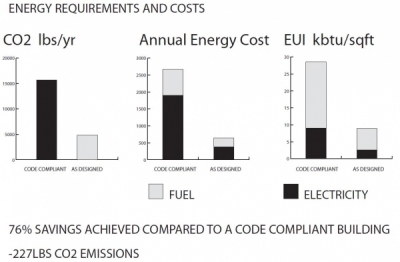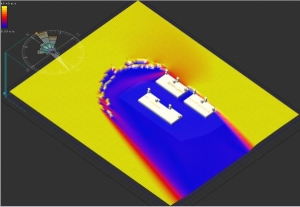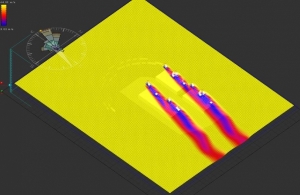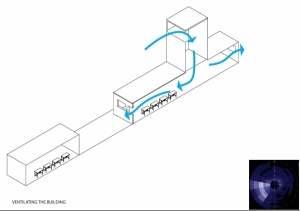Mistral Californica – Antelope Valley Visitor Center
This project was an entrant in the January 2014 Excellence in Analysis Awards. The project used building performance analysis to inform design decisions and created an example of a carbon neutral design in an arid region. The project’s visual representation deserves an honorable mention for clarity and aesthetics.
Project Title:
Mistral Californica
Project Designers:
Tadeh Hakopian
Project Date:
Dec 2011
Student
Project Scope
This project is a visitor center for the California Poppy Reserve located in the Antelope Valley west of Palmdale, California. The project is meant to be an example of a carbon neutral proposal in an arid region. The Antelope Valley is in the Mojave Desert at a high altitude which results in temperature swings throughout the year from extremely hot to very cold, and even snowing, as well as large temperature swings between day and night. The design aimed to take advantage of the available resources. Wind, water, and sun were the most important elements guiding the design as a platform for sustainable development for the region.
Project Imagery
The visuals from the project told the story of goals, design, and analysis conclusions.
 |
|
Decline of Groundwater Levels from 1915 – 1991 in Antelope Valley
Water access and use was an important consideration for the design as water is scarce throughout the region, and is getting scarcer.
|
 |
| A systems image describes sustainable design features (one of our favorites!). It’s also worth noting this is a good example of a rainwater storage system being sized appropriately. |
 |
| In terms of performance, the project set out to achieve code compliance. This diagram compares code compliance to the as designed building. |
Tips from Tadeh about Reducing Energy Use
- Look at all the resources available to you for performance targets. Wind, water, sun, and site can each be important criteria in your design strategies. Don’t overlook one in favor of others or you might lose out on a useful resource.
- Start with what you have the least of and try to get the most out of it. I didn’t have a lot of water available at the building location making a carbon neutral design challenging. I researched the amount of potential water from rainfall and realized that the rainy season during the winter would provide enough water to offset a substantial portion of the water use in the building. That made a big difference in the performance targets because I wouldn’t have as much energy-intensive piped water delivered to the site which improved the results and set a good example for what can be done with limited resources. Things like solar energy and site orientation were less demanding on the design so they were worked out quicker compared to the bigger problems.
- It’s not all about the performance. Reaching targets matters if you are achieving a sustainable project but it shouldn’t be at the expense of the design appeal. Making consistent use of design features while integrating the building and systems into the setting goes a long way towards spreading awareness and acceptance of carbon neutral strategies. It is especially useful to keep that in mind for something like a visitor center or residence which will be attractive to guests while displaying features that make it function.
More about the designer
 |
Tadeh Hakopian is a former student of Cal Poly Pomona. He graduated in 2012 with a Bachelor degree in Architecture with an emphasis in sustainable design. This project was for the Arid Lands Competition to design sustainable buildings and infrastructure in historically dry regions of the country west of the Mississippi. |
Comments









